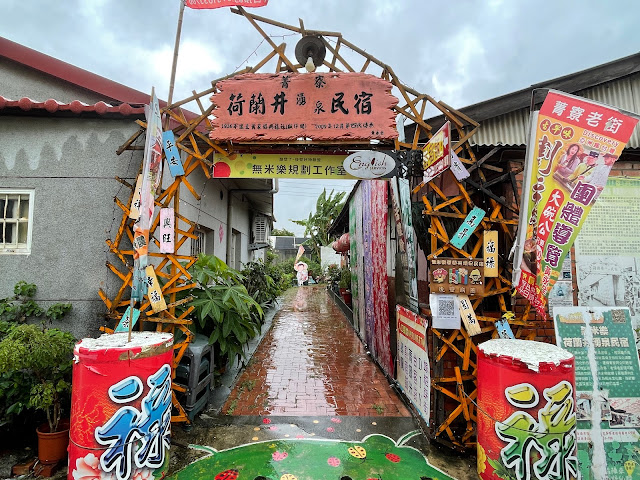It's the second post about visiting Houbi. In the previous one, Jingliao Old Street was introduced. Due to the bad weather, we didn't see much in that area, so there are still a few places on my "to visit list."
Xiaodong Elementary School Japanese Dormitory (後壁國小日式宿舍)
The principal's dormitory and the teacher's dormitory of Xindong Elementary School had been "haunted houses" for students due to their disrepair. Those buildings were uninhabited for over 15 years and covered with grass. Until 2017, when plans for renovations started. A wooden Japanese-style dormitory was built in 1942. Although it cannot be listed as a historical building, thanks to a private old building plan proposal by the Ministry of Culture, the renovation was closer to achieving. After the case was approved, 70% of the funds were subsidized by the Ministry of Culture and the Municipal Cultural Bureau, and the remaining 30%, 1.7 million yuan, was self-raised by teachers and students. After purchasing materials, the two buildings opposite the entrance of Xiaodong Elementary School have been renovated.
See also: Jingliao Old Street
Farmers Association Octagonal Warehouse (後壁農會八角倉庫)
Tainan’s Houbi District Farmers Association has an octagonal warehouse that is more than 50 years old. The farmers' association hopes to make use of it so that the younger generation in the hometown can understand the characteristics of the rice warehouse in Houbi. The Cultural Affairs Bureau pointed out that it will send staff to assist and deepen the artistic and humanistic characteristics. The Yunlin Tuku Farmers' Association also repaired the octagonal warehouse many years ago. Under the guidance of Luo Zhengzong, the director of the Southern District of the Agriculture and Food Administration, Lin Yixin led the colleagues of the farmers' association to observe last Friday. The number of preserved octagonal warehouses is quite rare, and some of them have even been demolished long ago.
Huang Family Ancient House (後壁黃家古厝)
The Huang Family Ancient House was announced as a historic site on April 9, 2008. It's one of the few intact Hokkien-style courtyard houses in Taiwan. Although it was raining, and there was information that due to Covid-19 the place is closed, so I barely took any pictures. Hexing’s generation, he still lived in Jingliao (now the area of Molin Village, Houbi District) to farm for a living. Later, Huang Hexing’s four sons Huang Mou, Huang Dong, Huang Zhenlong, and Huang Zhende moved in together. The ancient house is currently maintained and managed by the descendants of the four Huang brothers. The Huang Family ancient house on the back wall is a courtyard house covering an area of more than 6,000 pings. After the ancient house was declared a historic site in 2008, it was partially damaged in the Jiaxian earthquake in 2010 and was repaired afterward.
Shianli Signal Station (仕安里 長短樹信號所遺址)
The small bungalows are surrounded by old railways. There are no trains to take here, but it's the intersection with the most five-minute train lines in Taiwan and has the only remaining five-point signal control station. This signal station has existed here since the Japanese occupation period. The railway can go north to Keelung, south to Pingtung, Baihe, and Chiayi in the east and west. In the past, when sugarcane was abundant, if the sugarcane harvested by the surrounding sugar mills had nowhere to put it, they would be transported here to park first. The surrounding Shi'an Transfer Station also won the 2019 Architectural Garden Award for Public Landscape Type. It was raining heavily when we arrived, and the building was closed as well, so there was not much to see here.



























































